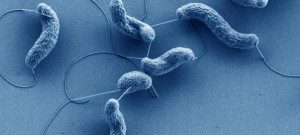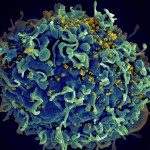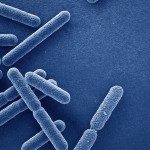Les bases de l’ARN peuvent subir une grande variété de modifications chimiques, notamment la méthylation, la pseudouridylation, la dihydrouridylation, l’incorporation de queuosine et d’autres altérations complexes. Étant donné que les molécules d’ARN fonctionnent à la fois comme matrices pour la synthèse protéique (ARNm) et comme composants essentiels de la machinerie de traduction (ARNt et ARNr), ces modifications influencent la production protéique bactérienne et, par conséquent, l’ensemble du protéome. La variation des niveaux de modification de l’ARN peut également générer une hétérogénéité phénotypique au sein d’une population bactérienne.
Bien que certains gènes de modification de l’ARNt soient essentiels, la délétion de nombreux autres ne produit aucun phénotype observable en conditions non stressantes. Cependant, des études récentes ont révélé des liens entre les modifications de l’ARNt et les réponses au stress dans plusieurs espèces bactériennes, et de nouveaux types de modifications de l’ARN continuent d’être découverts.
Impact des modifications de l’ARNt et de leur dynamique sur l’adaptation au stress chez Vibrio cholerae
La diversité des modifications de l’ARNt, leurs effets spécifiques sur la synthèse protéique et les processus cellulaires, ainsi que la possibilité que leur expression soit régulée par les stress environnementaux, en font un domaine de recherche prometteur. Nous combinons des approches à haut débit (Tn-seq, transcriptomique, protéomique et Ribo-seq) avec des outils moléculaires et de la génétique bactérienne pour caractériser le rôle des modifications de l’ARN dans la réponse aux antibiotiques, au choc thermique, au stress oxydatif et à d’autres conditions environnementales changeantes.
Impact des modifications de l’ARNr de Vibrio cholerae sur l’assemblage, la structure et les interactions du ribosome
Nous étudions comment les modifications de l’ARNr influencent l’assemblage du ribosome, sa stabilité, sa structure et ses partenaires d’interaction. Nous analysons également de nouvelles enzymes de modification de l’ARNr spécifiques à V. cholerae afin de mieux comprendre leurs rôles dans la biogenèse et la fonction du ribosome.
Déterminants de l’hétérogénéité phénotypique, de la colonisation de l’hôte et de la réponse antibiotique dans des isolats cliniques
Nous étudions les mécanismes génétiques qui sous-tendent la tolérance et l’adaptation au stress dans des isolats naturels et cliniques d’Escherichia coli et de Vibrio cholerae dans divers environnements, en mettant particulièrement l’accent sur les gènes de modification de l’ARN et les protéines ribosomiques.
















